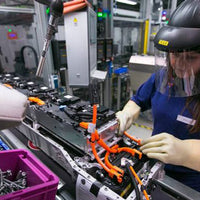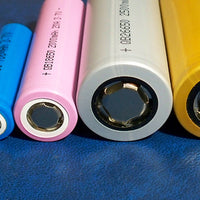Lithium iron phosphate batteries have a high operating voltage, high energy density, long cycle life, green and a series of unique advantages, and support stepless expansion, the composition of the energy storage system can be large-scale electrical energy storage.
With the rise of the energy storage market, in recent years, some power battery companies have laid out the energy storage business, to develop new applications for the lithium iron phosphate battery market. The following is an introduction to the lithium iron phosphate group energy storage system containing which components?
Lithium iron phosphate battery pack energy storage system components
1. Control system
The LiFePO4 energy storage system is controlled by a programmable logic controller (PLC) and a human-machine interface (HMI). one of the key functions of the PLC system is to control the charging time and rate of the energy storage system.
For example, the PLC can receive real-time data on the price of electricity and decide how quickly to recharge the battery system based on the maximum allowable demand, the state of charge, and the price comparison during peak/off-peak hours. This decision is dynamic and can be optimized on a case-by-case basis.
It is integrated with the rest of the system through standardized communication inputs, control signals, and power supply. It can be accessed via dial-up or the Internet. It has multiple layers of defense to restrict access to its different functions and provides customized reporting and alarm functions for remote monitoring.
2. Power Conversion System (PCS)
The function of a power conversion system is to charge and discharge batteries and to provide improved power quality, voltage support, and frequency control for the local grid. It has a complex and fast-acting, multi-quadrant, dynamic controller (DSP) with dedicated control algorithms, capable of converting the output over the entire range of the device, i.e. cyclically from full power absorption to full power output. It works properly for reactive power and any combination of active and reactive power demands.
3. Lithium iron phosphate battery stack
The power stack is composed of several single cells. Lithium iron phosphate battery pack energy storage system is capable of economically storing and providing large-scale power on demand, mainly in a stationary mode. It is a long-life, low-maintenance, high-efficiency technology that supports the stepless expansion of power and storage capacity. Energy storage systems(ESS) are particularly effective for renewable energy providers, grid companies, and end users.

Lithium iron phosphate energy storage system can be applied to all aspects of the power supply value chain, can be such as wind, solar, and other intermittent renewable power into a stable power output; the most optimal solution for power supply in remote areas.
The deferral of fixed investments in the power grid and the application of peak shaving and valley filling. Energy storage systems can also be used as a backup power source for substations and communication base stations. LiFePO4 energy storage systems are environmentally friendly, with the lowest environmental impact of any energy storage technology, and do not use elements such as lead or cadmium as primary reactants.
In the process of continuous research and development and practice of energy storage systems, in addition to designing corresponding solutions to some practical problems, further practical development and application of other remote monitoring, cloud management system, big data collection and analysis, and energy storage battery recycling have been done.
This will be continuously applied and enhanced in future power station energy storage, home energy storage, communication energy storage, and other different energy storage systems.







0 comments